Scouting: Hugo Ekitiké
Diving deep into one of the most exciting strikers in the world
If you prefer a Portuguese version of this scouting report, check out the original text here.
Eintracht Frankfurt’s great start of the season (3rd place, four wins in six Bundesliga games) has a lot to do with his striking duo: Omar Marmoush (25) and Hugo Ekitiké (22). Together, they’ve formed a formidable partnership, one capable of hurting any club in the world (just ask Bayern, who themselves have been one of the best teams in Europe this season also).
Over the course of the last two decades, we’ve seen lots of different striker’s profiles, from aerials box presences to false nines, restless runners and the modern transition monsters. Recently, a new trend has begun to emerge: taller strikers that can run hard, but can also dribble hard (think Victor Boniface, Aleksander Isak, Joshua Zirkzee, etc). Hugo Ekitiké is one of those guys.
The French striker seemed destined to be a star back when he was at Stade Reims, scoring 10 times in his first full professional season in France (21/22), before being lured by Paris Saint-Germain, where he couldn’t replicate his form and struggled massively for minutes. Eintracht Frankfurt saw an opportunity there and signed him (initially on a loan deal) last winter, in January 2024. The German club then activated a buyout clause (estimated at 16.5 million euros) in his contract just two months after securing his services — they clearly believed in him and are now reaping the rewards of that faith.
Across all competitions this season, Ekitiké started 7 out of 8 possible games, scoring five times and assisting another four, all of that in only 526 minutes — that’s a direct goal contribution after each 58 minutes played!
Roles, positions and offensive runs
Still 22 years old, Hugo Ekitiké stands at 1.89 meters tall, possesses a slender profile and long strides. In this current season, he’s been mostly deployed as a striker, alongside Omar Marmoush in a 4-4-2 base formation. Although he usually starts from the right side, he does have lots of freedom to move around, always complementing Marmoush’s runs.
At times when his partner pins the defensive line, Hugo drops back to offer a central outlet: he isn’t an expert at that, but does his job to a good level, keeping the game flowing and finding unmarked teammates. He’s better when making first-time passes (as opposed to pausing the ball and using his body frame to hold up the ball) and tends to release the ball quickly, as he’s kinda uncomfortable absorbing physical contact at his back: to avoid that from happening, sometimes he rushes his decision, leading to some misplaced passes. Plenty of time to work on that, though.
However, that’s a role mainly executed by Marmoush and Ekitiké is a striker more associated with final third actions: the amount of times he makes a run in behind is considerably larger than the coming short ones and he feels more comfortable upon receiving the ball facing the opposite goal. So, we usually see him in more advanced positions, on the edge of the defensive line, ready to pounce on a long ball.
Besides occupying a defender’s blind spot, he is quite good at shifting directions quickly to draw his marker one way before accelerating to the opposite one, using his explosiveness and better body orientation to gain precious meters, creating separation between him and the defender more easily.
That’s a role more suited to his physical attributes. He’s an explosive, powerful runner, one that is able to cover ground quickly with long strides, sprint time after time and maintain his top speed for a good time. Bundesliga's official records put his peak velocity at 35.53km/h, the 7th best mark this season — for reference, that’s close to Jeremie Frimpong!
Being 1.89m tall doesn’t equate to him being a good aerial duelist: he lacks the aggressiveness and physical strength to dominate opponents in the air and isn’t even a striker that is heavily involved in such situations (why would he, if his strengths lie elsewhere?). Taking his full career into account (only league games), he’s won approximately 40% of all aerial duels contested — not terrible, but still far from the better ones.
Another common run from Ekitiké’s game is the diagonal/lateral one from the center of the field to one of the flanks. That movement enables him to receive the ball facing the goal, sometimes in one vs one situations where he can use his explosiveness and dribbling skills to beat his marker. He’s quite impactful in these scenarios, be it hitting the byline to cross or cutting inside to shoot.
Dribbling
Ekitike’s dribbling skills might be his best trait. That’s a massive part of his game and he can generate lots of chances after a take-on, even if he doesn’t look like the most agile player on Earth. His numbers this season are out of this world (8.46 take-ons attempted per 90, completing almost 50% of them), but one could argue that they are skewed by his low share of minutes played. Fair enough, let’s check out his numbers from last season at Eintracht Frankfurt.
Among strikers (players listed as ‘FW’ at FBRef) with at least 720 minutes played last season, from Europe’s Top 5 leagues, he still comes up above average on volume and efficiency, close to names like Boniface and Mbappé. He’s good at dribbling, trust me.
The French striker can dribble not only in offensive transitions, but also in smaller spaces, rolling the ball from one foot to another to evade incoming tackles and pressures. That’s quickly becoming one of his trademark moves. Besides the efficiency, there’s an element of flair in his dribbles that can make even the most sullen draw a smile: body feints, stepovers, nutmegs, elasticos… he has it all.
Carrying
That combination of physical (long strides, acceleration, peak velocity) and technical (close control, dribbling skills) attributes also makes him a valuable asset in transitions, moments where he can run at defenses with the ball at his feet.
Transitions
Dino Toppmöller did a great job setting his team this season to play at the strength of his two strikers. Eintracht Frankfurt averages only 39.5 possession (second lowest value in the Bundesliga) per 90 and is one of the most direct teams of the Top 5 European Leagues, judging by the number of passes per sequence and direct speed of attacks. That means more space to counter and more opportunities for Ekitiké to run into the space, in a league already well known for that.
They usually adopt a 4-4-2 shape out of possession, with both strikers up top and an average defensive line closer to their own goal. They’re more than comfortable giving their opponents the ball and waiting for a mistake to break through quickly.
When the Eagles do recover the ball, Ekitiké’s first instinct is to hit the space behind the defensive line, anticipating through/long balls. His defensive contributions could be better, but conserving energy to attack is a strategy that seems to be working so far.
Eintracht Frankfurt made a name for itself signing, getting the best out of them and offloading strikers for profit in these last years: Sébastien Haller, André Silva, Luka Jovic, Rafael Borré, Randal Kolo Muani... most of them never reached the same heights after leaving the club, a fitting reminder that context is everything in football. If he keeps up these performances, Hugo Ekitiké could very well find himself the subject of another big transfer. For now, however, he seems to be happy in Germany, as should anyone who watches him play for Eintracht.
That’s it. If you enjoyed reading this, please drop a like (that helps a lot!) and consider subscribing to receive more pieces like this.
Also, don’t forget to share it with your friends! Thanks a lot!



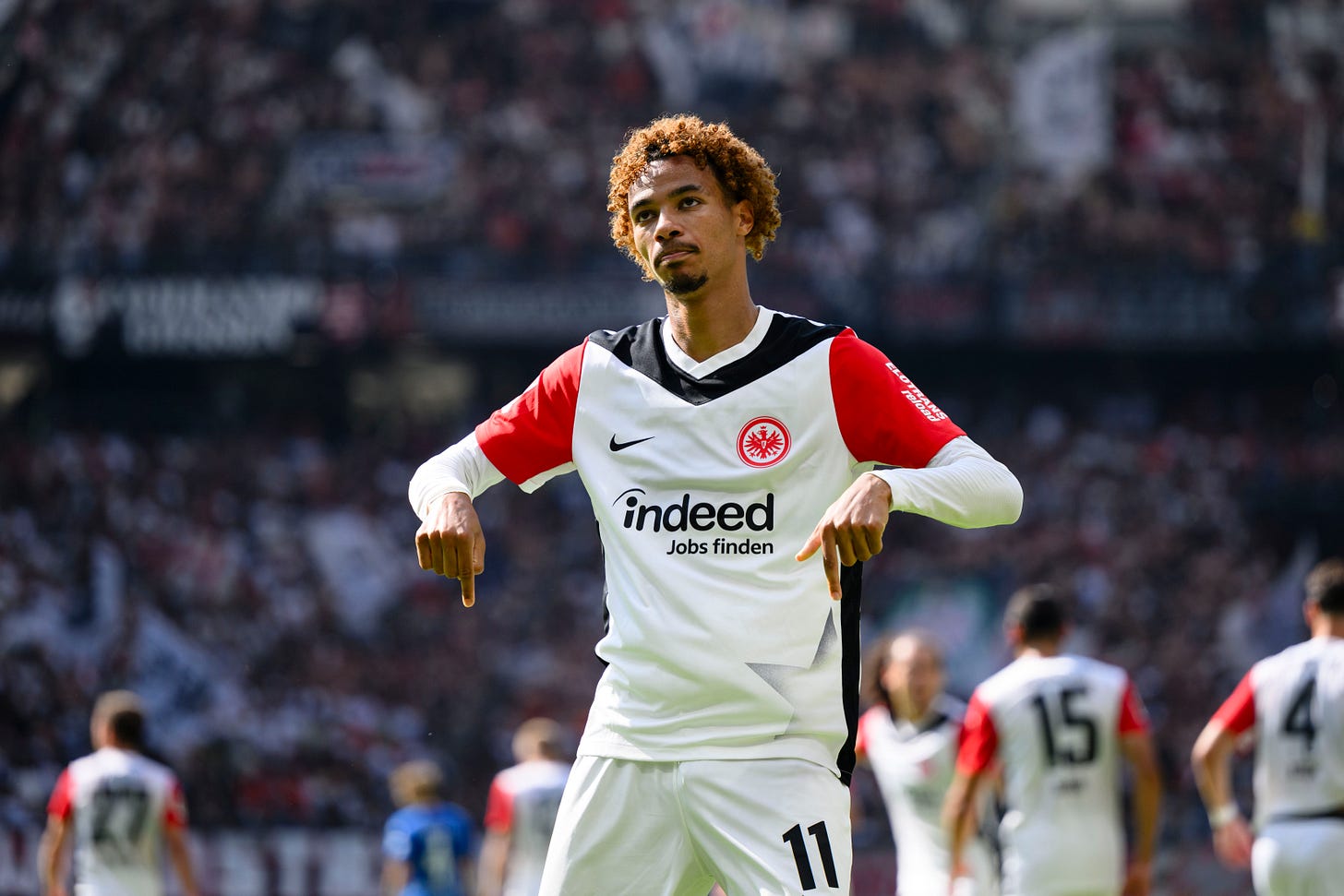
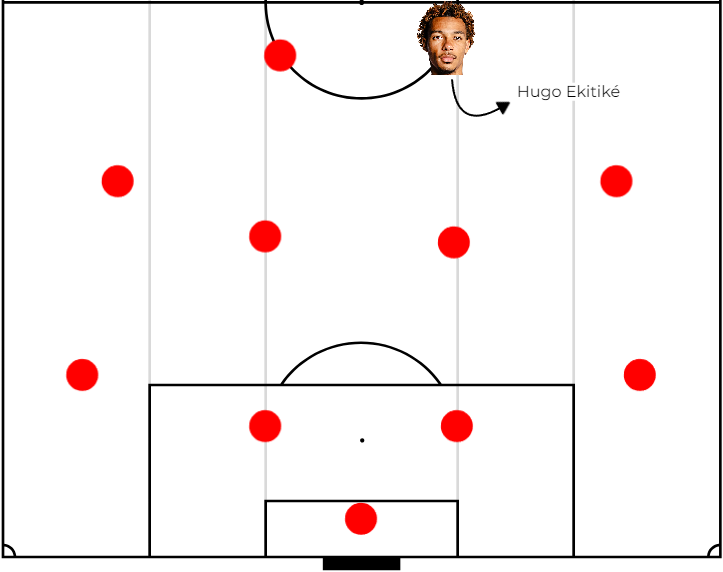
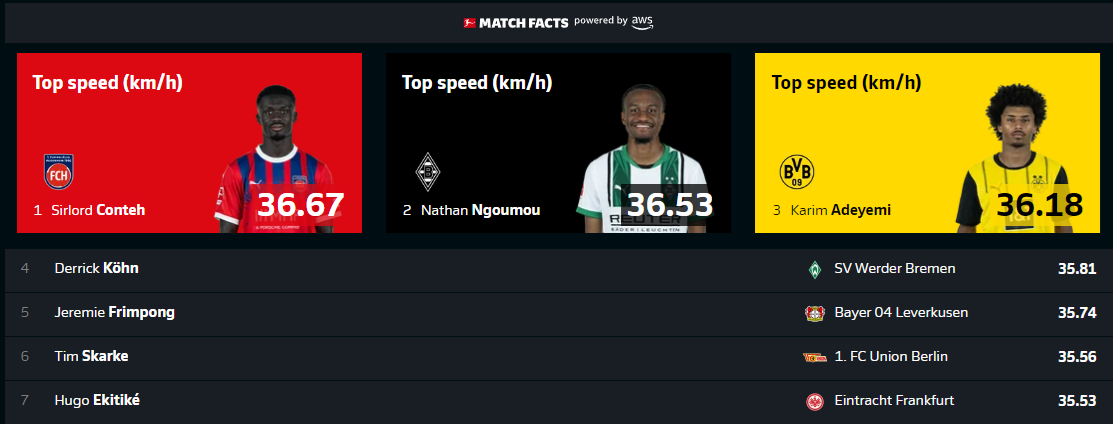
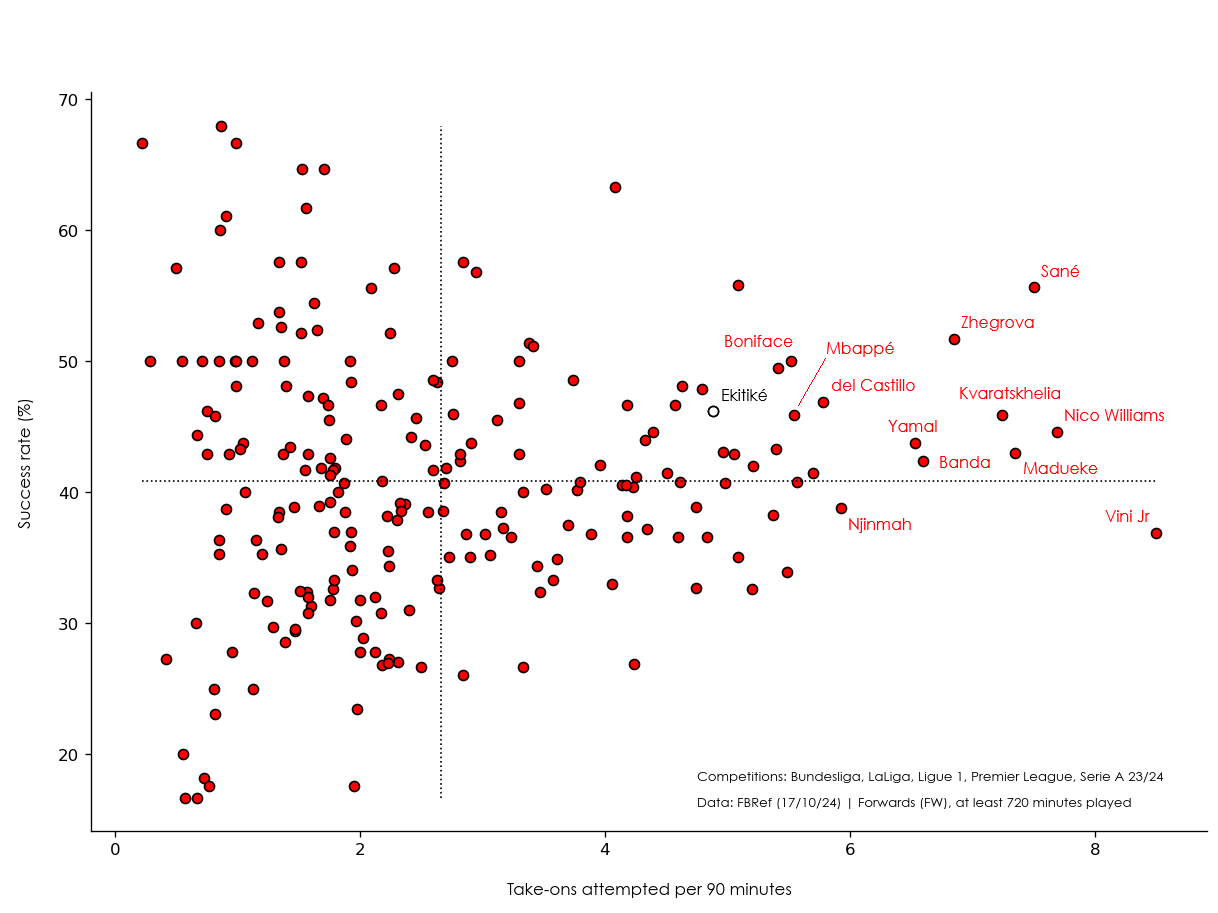
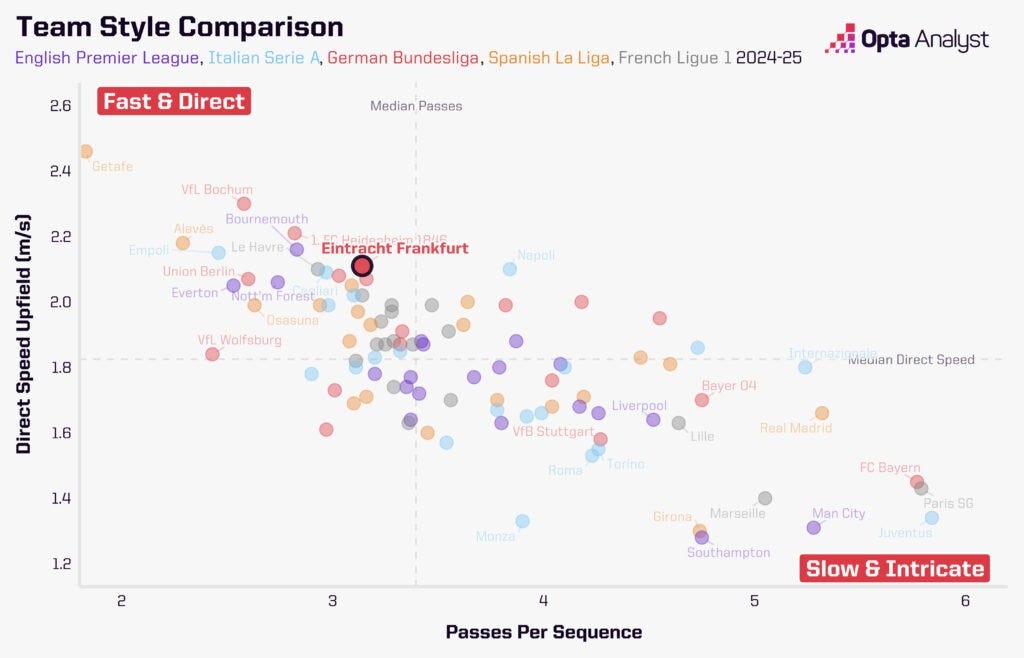
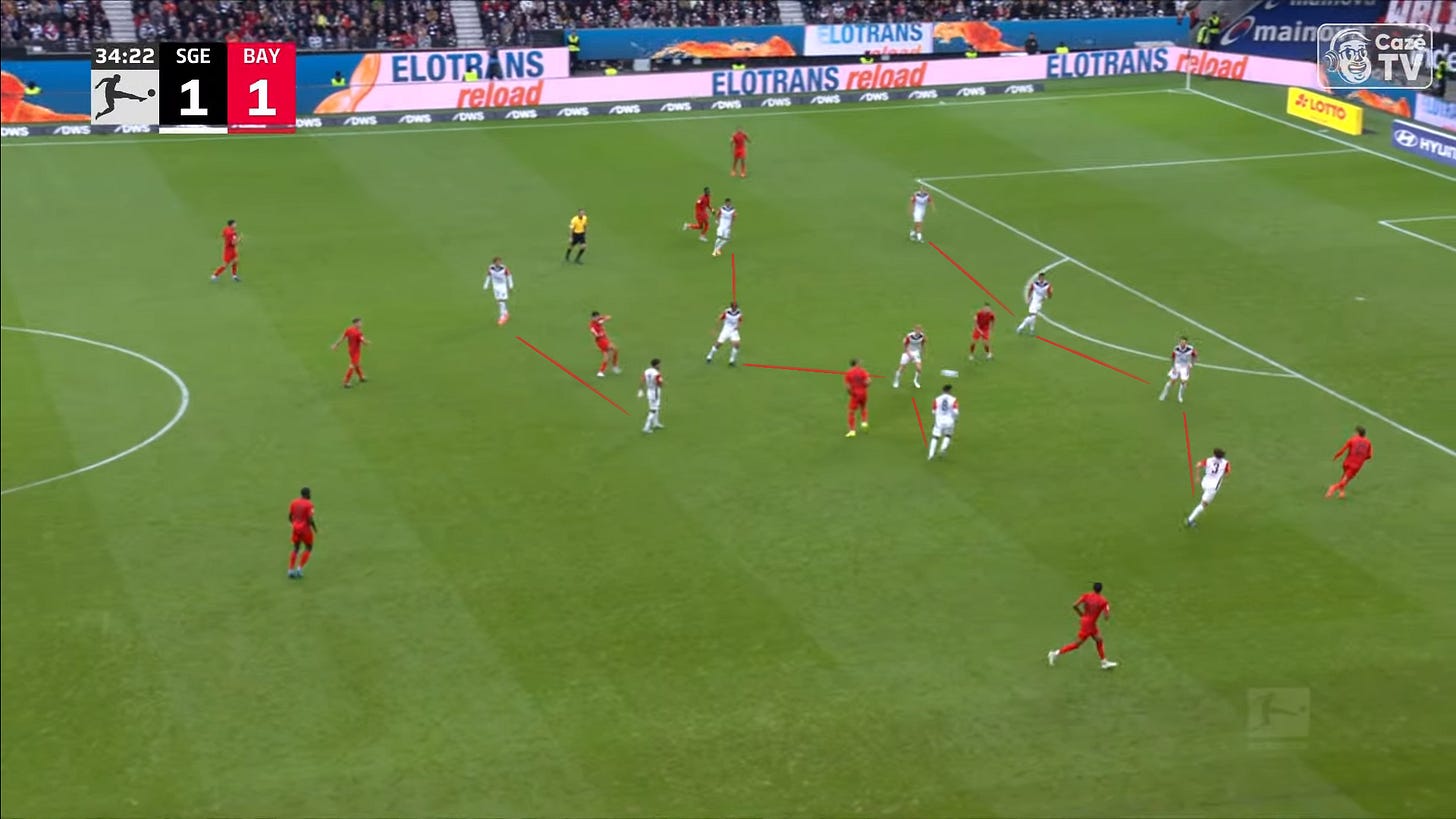
Really good analysis 👏🏾👏🏾